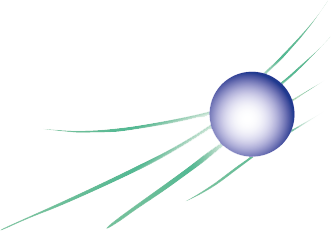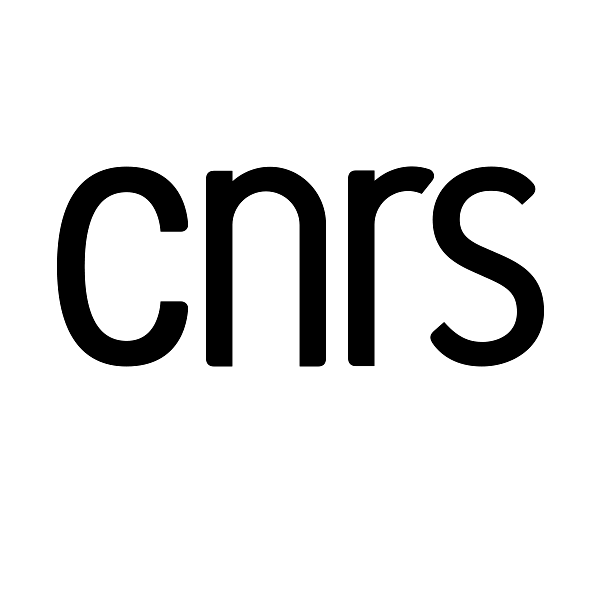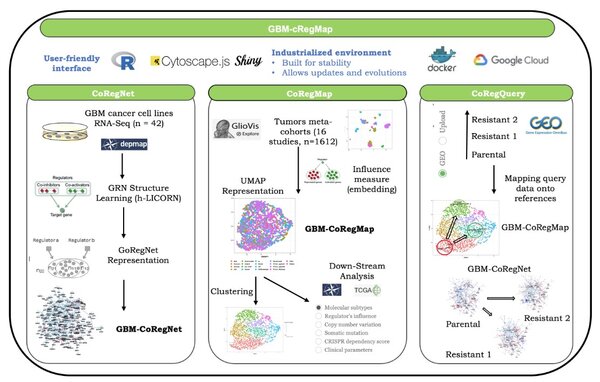

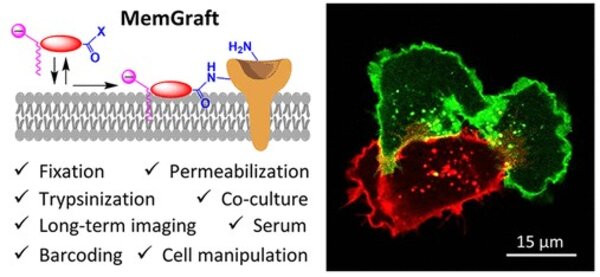
New publication in JACS Au for Andrey Klymchenko's team !
We are proud to announce the publication of the work of Nathan Aknine, Rémi Pelletier and Andrey Klymchenko from the Photoactive Materials and Bioimaging team, in the prestigious journal JACS Au. This study presents a major breakthrough in cell imaging using a new generation of fluorescent probes :…
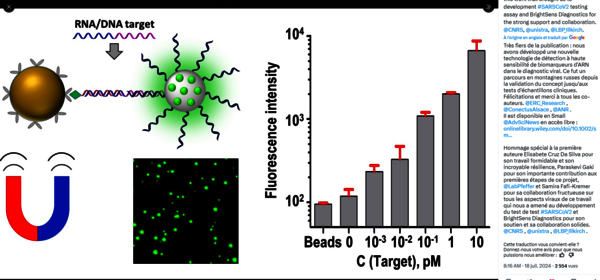
New ultra-sensitive nucleic acid detection method for diagnosis of cancer and viral diseases
Klymchenko team, in collaboration with BrightSens Diagnostics and teams of Pfeiffer (UPR9002-CNRS ARN) and Fafi- Kremer (HUS), has developed a revolutionary technology for ultra-sensitive detection of RNA and DNA, with applications in cancer diagnostics and viral diseases such as SARS-CoV-2. By…
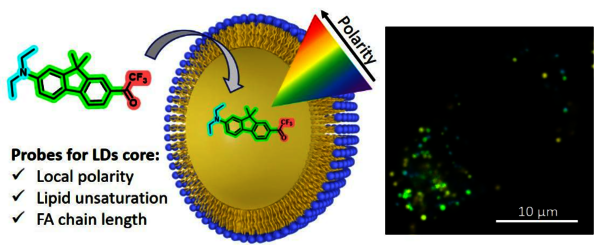
Double scientific advance for Nathan Aknine
New probes for imaging lipid droplets Nathan Aknine, a PhD student in the Photoactive Materials and Bioimaging team, recently published a paper with his supervisor Andrey Klymchenko, presenting innovative probes for imaging lipid droplets (LDs) in living cells. These new solvatochromic dyes, based…
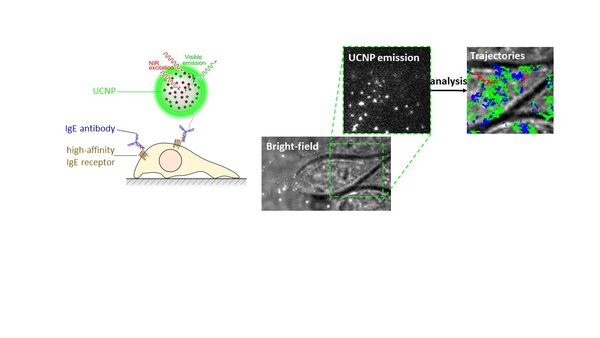
Upconverting nanoparticles optimized for long-term tracking of single molecules!
UpConverting NanoParticles (UCNPs) are capable of emitting visible light very efficiently after excitation by infrared light. UCNPs’ Anti-Stockes emission has been used for a wide range of applications. In the medical field, their spectrum of applications ranges from biosensors and bioimaging to…
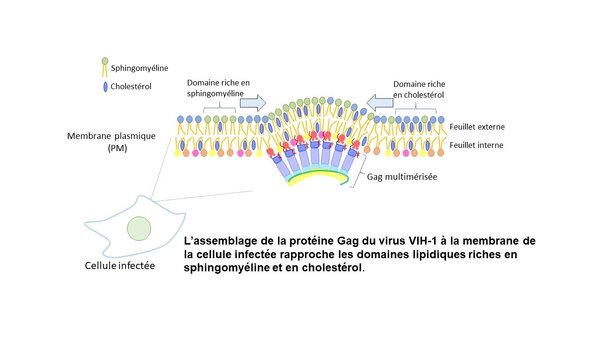
An unexpected discovery in the assembly of HIV
Human immunodeficiency virus type 1 (HIV-1) causes AIDS and is a member of envelope viruses in which virus particles are surrounded by a lipid membrane. Since the virus cannot synthesize lipids, the virus obtains lipid membrane during budding from the plasma membrane (PM) of infected host cells.…
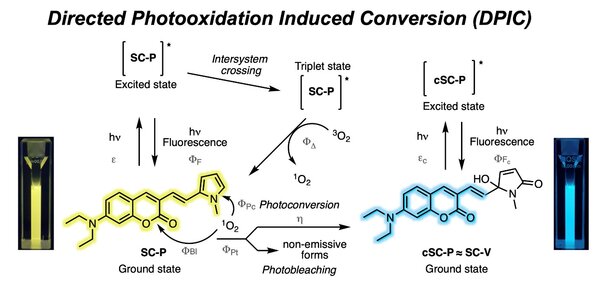
BrightSwitch, a new mechanism of photoconversion!
Photo-convertible fluorescent probes are able to change their emission color upon light irradiation. This phenomenon is advantageously used in microscopy to unambiguously track cells, organelles or biomolecules over large spatio-temporal scales. In this field, fluorescent proteins dominate, to the…

Kinetics of protein-assisted nucleic acid interconversion monitored by transient time resolved fluorescence in microfluidic droplets
Kinetics of protein-assisted nucleic acid interconversion monitored by transient time resolved fluorescence in microfluidic droplets Interconversions between nucleic acid structures, which are frequently promoted by nucleic acid chaperone proteins, play an important role in biology. FRET is…
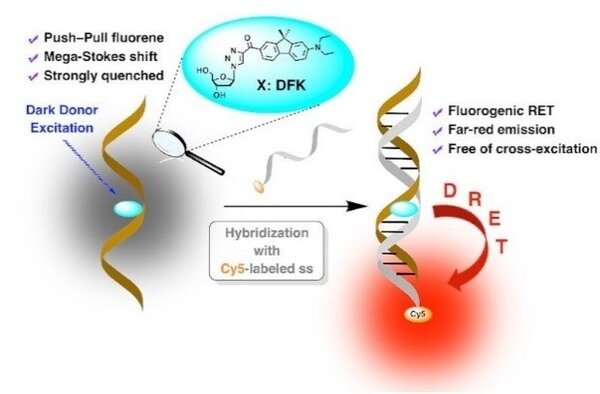
Intermolecular dark resonance energy transfer (DRET): upgrading fluorogenic DNA sensing
Intermolecular dark resonance energy transfer (DRET): upgrading fluorogenic DNA sensing FRET sensitivity is usually limited by the spectral overlaps of the FRET donor and acceptor. To overcome this limitation, a quenched donor presenting a large Stokes shift can be combined with a bright acceptor…
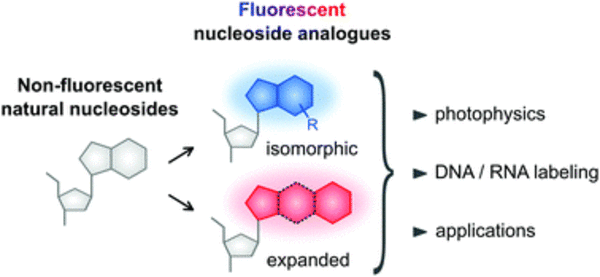
Fundamental photophysics of isomorphic and expanded fluorescent nucleoside analogues
Fundamental photophysics of isomorphic and expanded fluorescent nucleoside analogues Isomorphic and expanded fluorescent nucleoside analogues are artificial mimics of the natural non-emissive nucleosides, resembling them by their molecular size, geometry, and the presence of H-bonding groups. At…
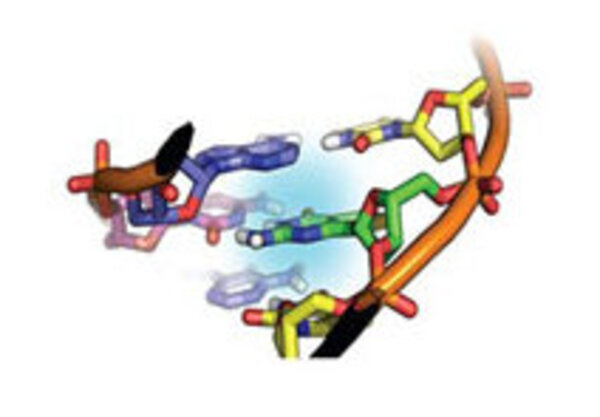
Publication of the LBP in JACS highlighted on the INSB website
Under the title “What makes thienoguanosine an outstanding fluorescent DNA probe?”, the work of the Laboratory of Bioimaging and Pathologies (CNRS / University of Strasbourg), in collaboration with the Universities of Siena, Naples and San Diego, published in the Journal of the American Chemical…
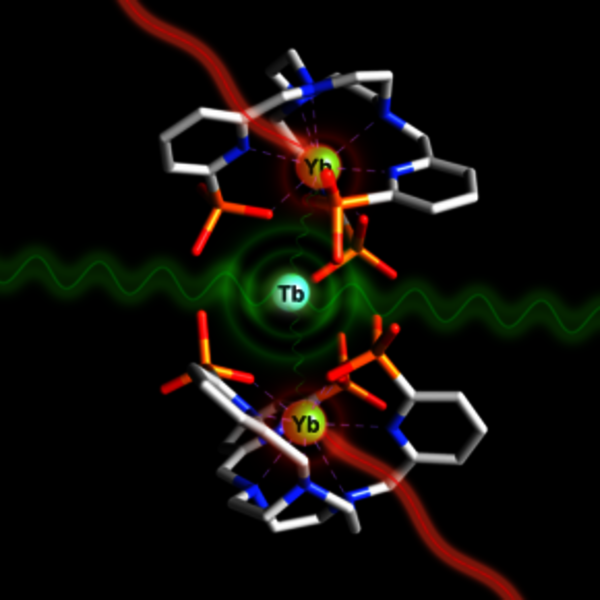
JACS publication was spotlighted by INC
With the title in French « Les photons associent leur énergie pour améliorer l’imagerie », collective data from the Institut pluridisciplinaire Hubert Curien (CNRS/Université de Strasbourg), the Laboratoire de bioimagerie et pathologies (CNRS/Université de Strasbourg) and the Institut des sciences…
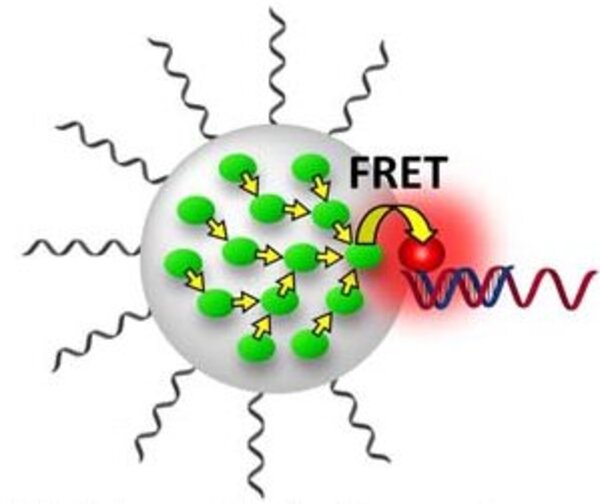
Publication of Team KLYMCHENKO in JACS
The group of A. Klymchenko “Nanochemistry and Bioimaging” developed DNA-functionalized fluorescent polymeric nanoparticles for amplified detection of nucleic acid cancer markers. These nanoparticles are 100-fold brighter than quantum dots and change their color in response to <10 hybridizations per…
